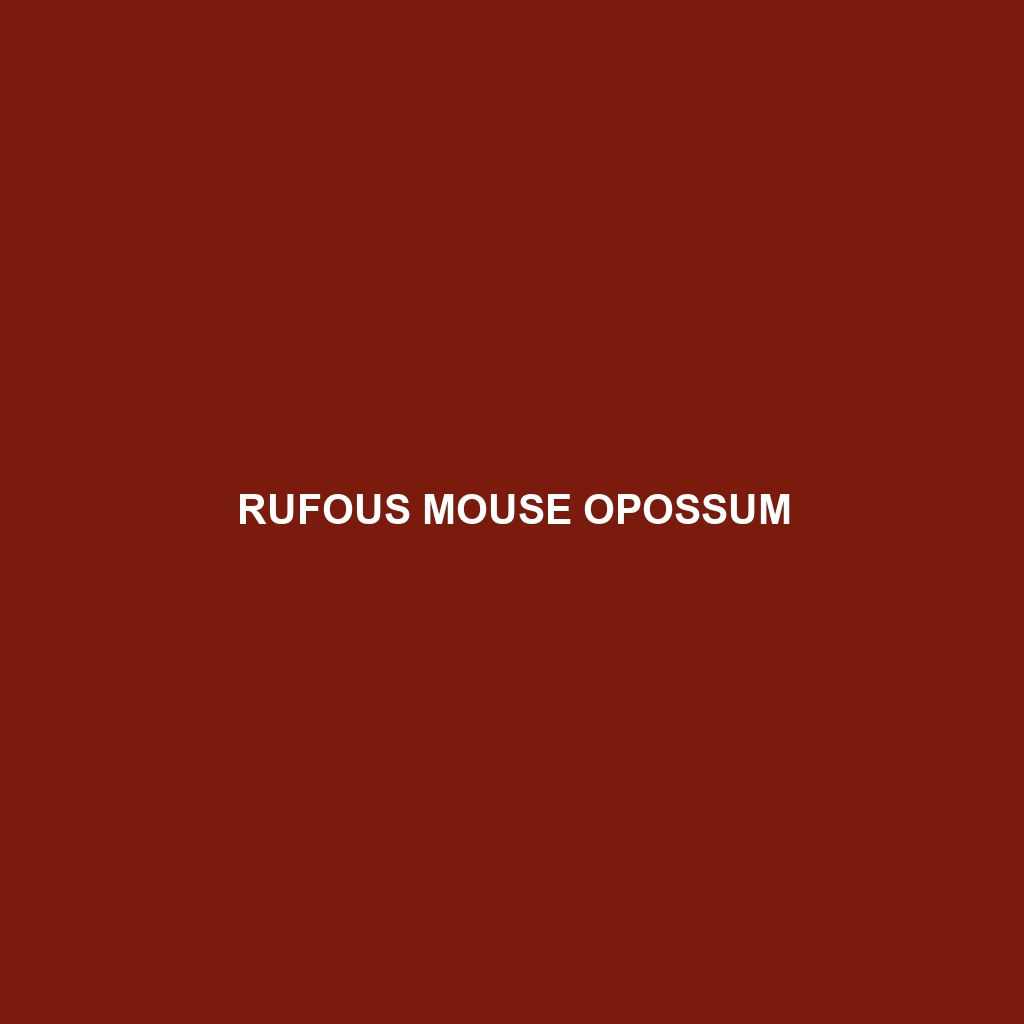Rufous Mouse Opossum: A Detailed Description
:
The Rufous Mouse Opossum (Marmosa lepida) is a small, nocturnal marsupial native to the tropical rainforests of South America. Known for its agile and arboreal nature, this intriguing creature plays a vital role in its ecosystem by aiding in seed dispersal and insect population control. With its distinctive reddish-brown fur and long prehensile tail, the Rufous Mouse Opossum is both an enchanting and essential inhabitant of its forest home.
Physical Characteristics:
Size: The Rufous Mouse Opossum is relatively small, measuring between 10 to 15 centimeters (4 to 6 inches) in head-body length with a tail that is often longer than its body, reaching up to 18 centimeters (7 inches).
Coloration: As its name suggests, the Rufous Mouse Opossum boasts a rich, reddish-brown fur that provides excellent camouflage amidst the foliage. Its underbelly is usually lighter, ranging from cream to whitish.
Special Features: One of the most notable features of this marsupial is its prehensile tail, which is well-adapted for grasping and maneuvering through the trees. This tail, combined with their dexterous feet, makes them proficient climbers. Additionally, they possess large, forward-facing eyes that enhance their night vision, aiding in their nocturnal lifestyle.
Behaviors:
Social Interactions: The Rufous Mouse Opossum is generally solitary, coming together only during the breeding season. They communicate through vocalizations and scent markings to establish territories and attract mates.
Feeding Habits: As omnivores, their diet consists of a variety of fruits, insects, small vertebrates, and occasionally nectar. They play a crucial role in seed dispersal, contributing to the health and regeneration of their forest habitat.
Ecological Roles: In addition to seed dispersal, these opossums help control insect populations and serve as prey for larger predators, thus maintaining the balance within their ecosystem.
Habitat:
The Rufous Mouse Opossum is predominantly found in the lowland tropical rainforests of countries such as Brazil, Peru, and Bolivia. They prefer dense, moist environments where they can easily navigate the treetops and find food sources.
Adaptations:
Arboreal Adaptations: Their prehensile tail and agile limbs are perfect for an arboreal lifestyle, allowing them to climb and forage high in the forest canopy.
Nocturnal Lifestyle: Their large eyes and keen sense of hearing are adaptations that support their nocturnal habits, enabling them to hunt and move about efficiently in the dark.
Camouflage: Their reddish-brown fur blends seamlessly with the forest environment, providing protection from predators.
Conservation Status:
The conservation status of the Rufous Mouse Opossum is currently listed as Least Concern by the IUCN. However, ongoing deforestation and habitat fragmentation pose significant threats to their populations. Conservation efforts aimed at preserving tropical rainforest habitats are essential to ensure their continued survival.
Fascinating Fun Facts:
Marsupial Pouch: Unlike many other marsupials, the Rufous Mouse Opossum does not have a well-developed pouch. Instead, the young cling to the mother’s teats and are carried on her back as they grow.
Diverse Diet: Their ability to consume a wide variety of foods, from fruits to insects, makes them highly adaptable and resilient in their environment.
Agile Climbers: Their remarkable climbing abilities are not just for navigating trees; they also use their skills to escape from predators and locate food in hard-to-reach places.
The Rufous Mouse Opossum is a fascinating example of the rich biodiversity found in tropical rainforests. With their unique adaptations and vital ecological roles, these small marsupials are an important part of their ecosystem’s complex web of life.
